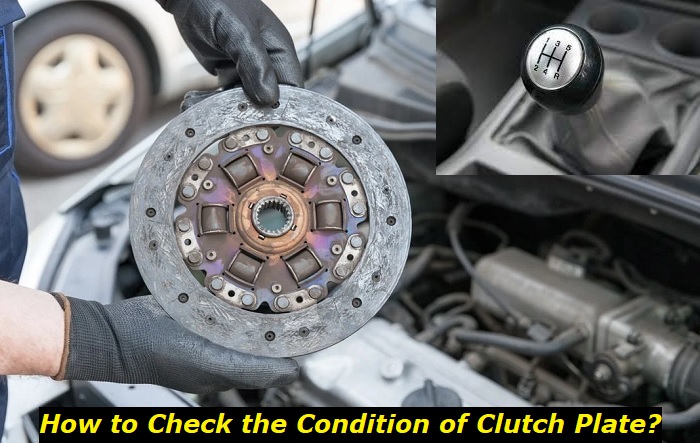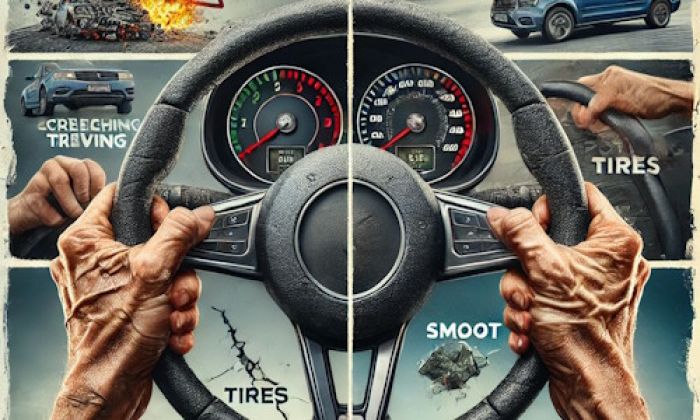The clutch system is a crucial part of your manual transmission vehicle. It connects the car's engine to the transmission and provides the motive motion you need to move. The clutch is also prone to wear and tear as it is always active. However, although it wears and tears like any other part of a vehicle, the rate at which this happens depends mainly on the driver's driving style.
Manual transmission use tips highlights
- Level of importance:High
- Problem prevention:Maintenance, careful driving
- Needed expertise:No
- Needed tools:No tools
- Time taken:1-2 hours for practicing or learning
- Possible issues:Transmission failure, overloading, overheating, destroying gears, burning clutch.

Signs That It Is Time to Replace Your Clutch Plate
You will see a few signs when your clutch plate is about to pack. Some may not be as pronounced as others, but if you are attentive and know your vehicle well, you will be able to tell. Read on for symptoms of a bad clutch plate.
1) Slipping Clutch
One of the sure signs that your clutch plate is not in good condition is when the clutch begins to slip. Your car will experience reduced pick-up time and increased rpm. If you notice that your vehicle increases in rpm before it speeds up to match the rpm, you have a bad clutch plate. This occurs when the clutch plate has lost all its friction materials. The outcome of this problem includes increased fuel consumption.
To confirm your suspicion, park your vehicle and engage the parking brake fully. Start the car and put it in gear three before releasing the clutch pedal gently. Do not accelerate as you do this. If your car attempts to move and then stalls when you release the clutch pedal, your clutch plate is in perfect condition. However, if your engine does not stall even after you have released the clutch pedal completely, the clutch plate needs a replacement.
2) Shuddering
Another sure sign of a problematic clutch plate is shuddering. When you experience this problem, especially at low speeds, the clutch plate is contaminated. This can happen because oil or grease fell on the clutch plate surface or you passed on a water-logged road and exposed the clutch plate to sludge and water.
This problem may not require replacing the clutch plate as it dries off after a while and returns to normal operation. However, you may have a worn clutch pressure plate if it persists. You may experience the shuddering problem because of other issues, such as a misaligned engine and gearbox. If you recently took your car to the mechanic for engine or transmission work, the mechanic could have wrongly mounted the transmission or the engine.
3) Burning Odor
A burning smell is another sure symptom of a clutch plate requiring replacement. The clutch disc has friction materials on its surface that allows it to connect the engine and transmission as you shift gears. When these materials wear out, they leave bare metal grinding against each other every time you shift.
As these metal surfaces grind, they create a burning effect you can identify with the burning smell. If you notice a burning odor while driving, you may want to check the clutch system for a worn clutch plate.
4) Shifting Gears Become Hard
Smooth-shifting of gears requires all the clutch system components to be in good condition. If they fail, shifting from a given gear into neutral becomes difficult. You may notice that shifting gears as you drive is not as easy as it used to be. This is a sign of a worn clutch plate.
A worn clutch plate causes the pedal to refuse to move from one gear to another, making smooth shifting a thing of the past.
5) The Clutch Pedal Remains on the Floor
When a clutch plate is faulty, it makes the pedal too soft or too stiff and sometimes causes it to remain on the floor. When the clutch pedal sticks to the ground, it points to a fault in the clutch plate. It could also mean you have a throw-out bearing or the hydraulic system has a problem.
When you notice this, check the hydraulic system of your clutch before replacing the friction plate.
How to Test the Condition of Your Clutch
It is pretty easy to test the condition of your vehicle's clutch system. Please switch off the engine, press the clutch pedal to the floor then release it. The pedal should spring back up if the clutch plate is in good condition. It also puts in a little resistance as you press it down.
On the other hand, if you have a worn clutch plate, your pedal will feel a little easy to press and slowly move back to its original position. Sometimes it can feel bouncy or refuse to come back up.
How to Fix a Faulty Clutch Plate/ Cost
The cost of replacing a clutch plate depends on the make and model of your car. The best thing to do when you notice one of the above signs is to visit a professional mechanic for assistance.
The activity can be engaging and satisfying for those who love repairing their automobiles at home. However, changing engine oil at home does not qualify you to perform demanding repairs such as clutch plate replacement. As such, you should not do this at home unless you have background training in automotive repair.
Although it could save you decent money from labor charges, replacing a clutch plate in your home garage can cause your vehicle more problems.
We recommend you visit your dealership or trusted repair shop for assistance. Professional mechanics have the required tools, which could be plenty. You might need an engine hoist or car lift.
Replacing the clutch plate will have you separating the transmission from the engine and the driveshaft. In some cars, you may have to remove the engine from its bay to access the clutch plate. You may also have to disassemble the gearbox before fixing the clutch plate.
All these require a higher level of vehicle understanding to complete. If you do not trust yourself to replace the clutch plate, the best option is to take your vehicle to a professional mechanic for assistance.
Is It Okay to Drive With a Faulty Clutch Plate?
If you are experiencing one of the above symptoms, you may have a bad clutch plate. You may feel that the repair cost is too high and that you can keep going. Although it might feel like nothing, driving around with a faulty clutch system is unsafe. Waiting for the problem to go away only makes things worse.
Firstly, it is against the law to drive a vehicle with any problem on public roads. It could prove dangerous if the clutch plate fails and leaves you without power in the middle of a highway. You should not drive with a faulty clutch plate unless headed to the mechanic.
Another reason you should avoid driving with a worn clutch plate is that it can cause further damage to your vehicle. Like other critical components of your car, the clutch must be in perfect condition to avoid damaging other parts of your car. For instance, a faulty clutch system can damage the transmission.
Furthermore, the more you continue driving with a bad clutch plate because of its repair cost, the more you increase the money you will eventually spend. What you see as an expensive repair could double or three times if you do not repair it sooner.
Conclusion
The clutch plate is an essential part of the clutch system. If it develops a problem, it can cause your vehicle severe issues and sometimes even make it inoperable. Understanding how to identify a problem as soon as it arises is crucial. If your vehicle shows any of the signs we mentioned, visit your mechanic as soon as possible for a complete diagnosis and repair.
About the authors
The CarAraC research team is composed of seasoned auto mechanics and automotive industry professionals, including individuals with advanced degrees and certifications in their field. Our team members boast prestigious credentials, reflecting their extensive knowledge and skills. These qualifications include: IMI: Institute of the Motor Industry, ASE-Certified Master Automobile Technicians; Coventry University, Graduate of MA in Automotive Journalism; Politecnico di Torino, Italy, MS Automotive Engineering; Ss. Cyril and Methodius University in Skopje, Mechanical University in Skopje; TOC Automotive College; DHA Suffa University, Department of Mechanical Engineering






Add comment